About Toyota Rav4 Ignition Coils Replacement
While this article goes to the 2001-2005 Toyota Rav4 models, it also applies to other Toyota models and to Rav4 models of other years of manufacture too, and even other car makes.
In the 2001-2005 Toyota Rav4 models, the most common problem is the known malfunction of the ECM (manufactured by Fujitsu Ten), which causes erratic issues to the automatic transmission of these vehicles. When this happens, the ECM must be serviced the soonest as possible to avoid internal damage to the automatic transmission (you may find our professional ECM repair service in this link -> Rav4 ECM Repair Service.
IGNITION COILS
The second most common problem we have found in the 2001-2005 Rav4 models we have worked with, is a sudden engine problem that could be intermittent or could fail steadily. Such a problem is caused by misfires in the cylinder, and most of the time it happens because of one or more ignition coils failing. In many of those cases, more than one coil fails at the same time.
As you probably know, the Rav4 models like many other modern vehicles, use one independent ignition coil on each cylinder. In this case of the 2001-2005 Rav4, there are 4 ignition coils in total (for the 2.0L and 2.4L – L4 engine).
DIAGNOSIS
If you experience cylinder misfirings, it probably is a failing coil or coils and the only way to accurately know which coil or coils are failing is by using a scanner and running a trouble code scan. It can be done with any handheld generic scanner. It does not have to be expensive or any special model. If the results of the scan show any of the codes for cylinder misfiring (further below), then such information will tell you exactly what cylinders are misfiring, eliminating the guesswork. Each coil has an integrated feedback circuit that tells the ECM when any of the respective coils fail to fire.
Interested in the full wiring diagram of the ECU connections of the 2001-2003 Toyota Rav4?
(ALWAYS check your SPAM folder in case that you don't see the download in your inbox.)
Your information is safe with us. We take privacy seriously and DO NOT sell or share your information in any way.
Your data will only be used for sending the requested document(s) and for emailing any related information or material that we might offer in any future. If we do so, you will always be provided with a link for unsubscribing if you desire to do so.
You probably have seen videos where people look for the failing coil by taking out one coil at a time while the engine is running. Any ignition coil that makes no changes to the engine problem when it is taken out, then it should definitely be the damaged coil. If the problem gets worse, then the pulled coil was working ok and then go on testing the other coils. The problems of doing this that way are;
- There is a risk of electric shock.
- You may cause problems or damage electronic equipment, like the ECM, by disconnecting electric parts with the engine running.
- If there is more than one coil failing, the engine may shut off before getting to the problem, making it more difficult and confusing.
- Disconnecting a good coil will cause unburnt fuel to go past the exhaust manifold. If the fuel amount is much, it may harm or break the exhaust components if the fuel suddenly ignites. For example, second O2 sensors, the catalytic converter, and the muffler.
Replacing the faulty ignition coil(s) will probably solve the problem, but remember that the unreplaced coils will have the same mileage and use as the damaged coil(s) had and might fail anytime soon too. Our recommendation is to ALWAYS replace all coils at once.
In general, codes for cylinder misfires will tell you the cylinder(s) affected. Any code or combination of codes from the list below will hopefully guide you to the culprit:
| Detected Code | Trouble |
|---|---|
| P1300 | Cyl #1 Feedback |
| P0301 | Cyl #1 Misfire |
| P1305 | Cyl #2 Feedback |
| P0302 | Cyl #2 Misfire |
| P1310 | Cyl #3 Feedback |
| P0303 | Cyl #3 Misfire |
| P1315 | Cyl #4 Feedback |
| P0304 | Cyl #4 Misfire |
| P0300 | Random Misfire |
Replacing the Ignition Coils
Replacing your 2001-2005 Rav4’s ignition coils is a fairly easy job and you can do it yourself. You will need a 10mm socket wrench with an extension to remove the top plastic cover of the engine (2 bolts) and also for removing the coils that are going to be replaced. Each coil is attached with two 10mm bolts. Don’t let the top plastic cover scare you. After you remove the two bolts attaching it, you will just need to pull it up and it will go off.
Ignition coil #1 is the one farther away from the battery and ignition coil #4 is the one nearest to the battery. So looking at the engine from the front of the car, ignition coil #1 is the one at the left-most position.
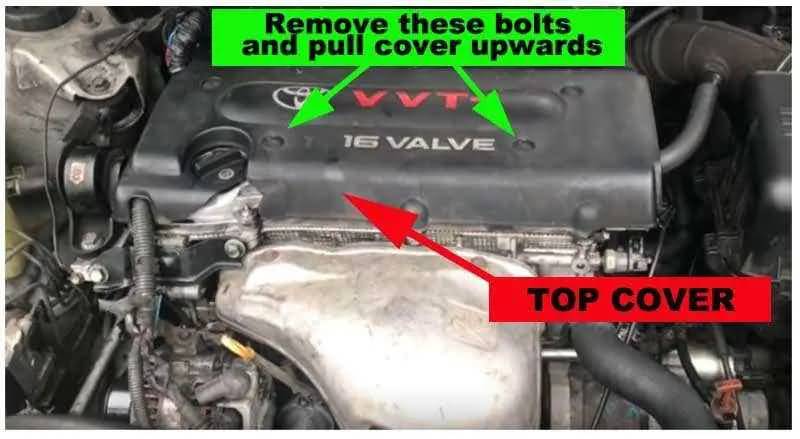
Remove engine top cover Toyota Rav4

Identifying ignition coils in Toyota Rav4
PART NUMBERS
The following are the genuine parts numbers for ignition coils of the 2001-2005 Toyota Rav4 (2.0L, 1AZ-FE engine or 2.4L, 2AZ-FE engine). Also, the same part numbers are used in the 4-Cylinder versions of the 2006-2008 Rav4 (with 2.4L, 2AZ-FE engine). All these numbers are interchangeable:
90080-19023
90919-02243
90919-02244
Ignition Coil Replacements
This is the most important part of this document. As soon as you diagnose a failing coil or coils, next you will probably be looking for the best prices for replacement ignition coils, either locally or online. Of course, we all like to get the best quality at the best prices and that is perfectly OK. As long as you look for the OEM (genuine) ignition coils made by Denso, you will have no problems. The MSRP (Manufacturer Suggested Retail Price) of EACH coil is over $100.00 as shown below, but that is only that, the MSRP. You may find genuine coils at online marketplaces like eBay and other online shops at much better prices.

Rav4 ignition coil MSRP
All replacement (Non-OEM) ignition coil types that we have tried so far in a couple of years, especially the Chinese replacements, have failed after some months, some failed in just hours of use, and some others failed almost instantly.
We did on-bench tests on some of those replacement coils and the high voltage output (for the spark) not only was lower than normal, but they lasted for seconds only before dying completely. The high voltage generated by the genuine (OEM) coils is definitely higher.
Since the spark produced by the replacement coils had a lower voltage than needed, it also caused misfires in the engine just like the failing coils were doing. Incomplete combustion because of this, will results in decreased engine power, lower fuel economy, and will be richer in toxic emissions.
These parts are not just ignition coils. The assembly is composed of the ignition coil itself, the amplifier circuit, and the coil feedback circuit, all embedded in a solid part. The drive voltage and current values are very specific and are produced by the ECM (Engine Control Module). So a replacement ignition coil must not only have the same specific coil specifications, but the internal circuit must also match the electrical working specifications of the genuine coils.
So how to know which ignition coils to buy when all sellers put “OEM” or “Genuine” in everything they sell today?
Over the internet, you will find online stores that will sell genuine parts for reasonable prices. You just need to know how to recognize the genuine parts out of the replica. You can never be 100% certain of something just by its looks, but this may help when you are searching. Real genuine OEM ignition coils will always have “Toyota”, “Denso” or both names on a flat surface of the assembly. The letters and numbers will be NEATLY engraved and not just painted, nor printed and not only slightly engraved. The picture below is how the genuine part looks.
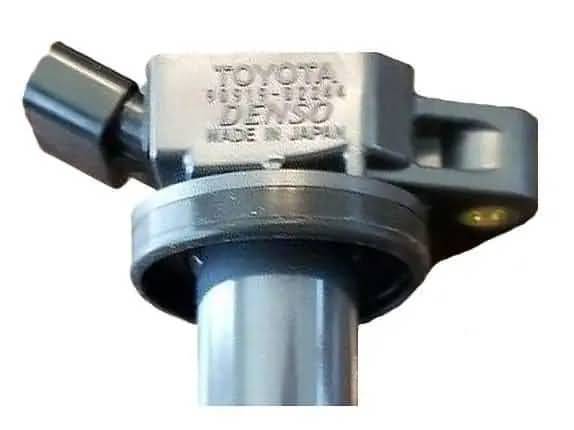
Genuine Toyota Denso ignition coil
NON-Genuine coils will be completely blank most of the time (no numbers, no name) and some will have only the part number engraved, no trademark, or anything else. Also, color tone (dark gray or not-so-dark gray) says nothing about the part being genuine or not, as the OEM manufacturer may use different materials with slightly different colors when manufacturing a new lot. Below are some classic examples of replicas, but there are many more:
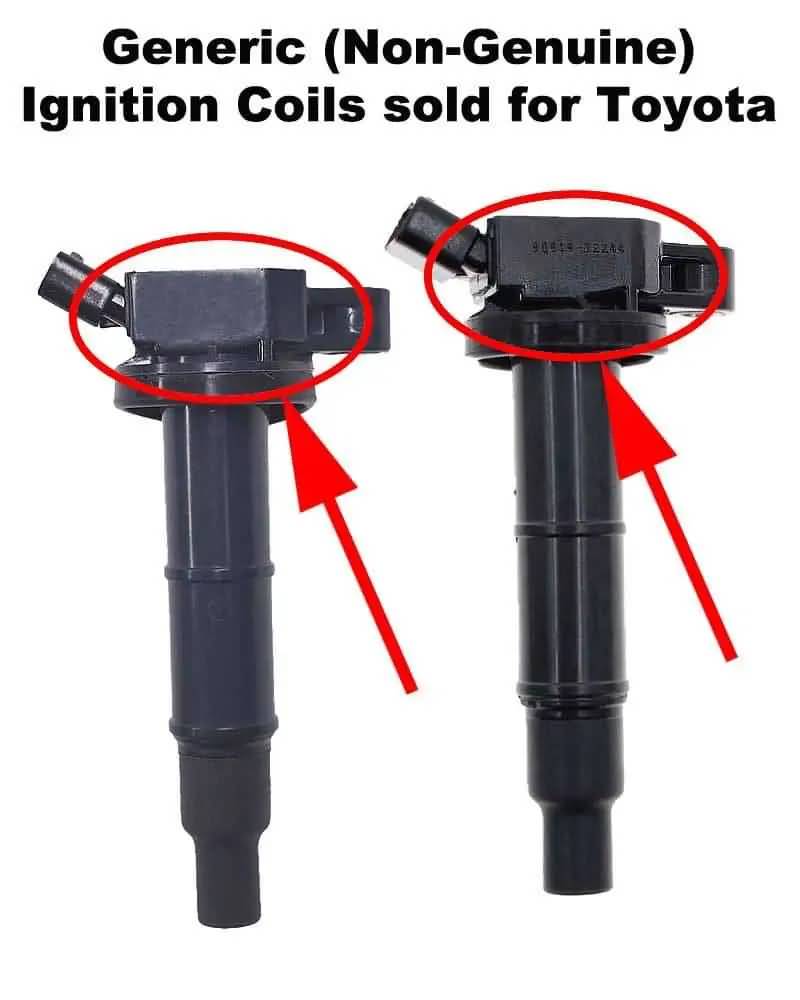
Below is an example of the yellow generic ignition coils sold for Toyota and other cars. Some are so generic that have no print at all and some others are called “High Output” or some other fancy name that would suggest superior performance. Please just stay away from those too. They are the same Chinese coils, just painted in vivid colors.
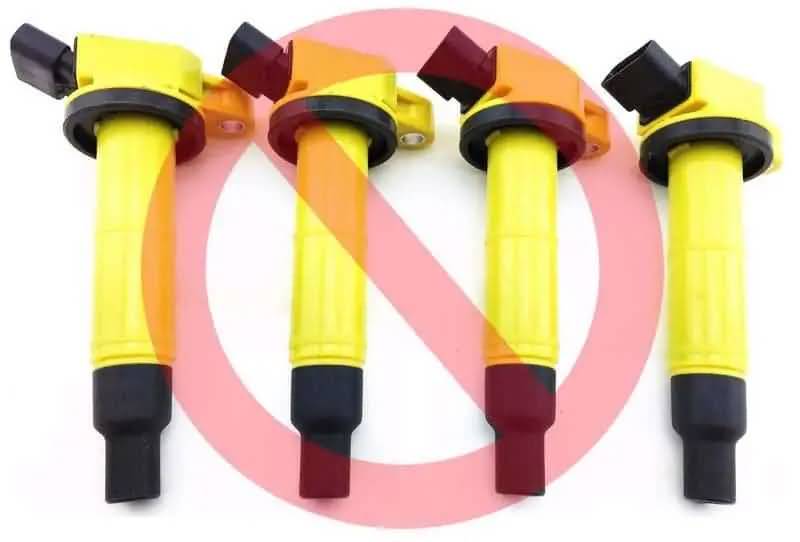
Avoid these ignition coils on Toyota cars
Refurbished Coils
No matter how good an ignition coil looks in a picture, if the coil is marked as “Used” or “Rebuilt” or “Refurbished” as I commonly see some sellers doing on eBay, DO NOT buy it! Buying used coils is like buying a disposable battery with only half of its charge or less. It may work or it may not. If it works, you will have no idea of how long will it last until it fails. You don’t know how much of its lifespan is left. Again, the same as disposable batteries.
If you think of it, “Rebuilt” or “Refurbished” ignition coils, who rebuild or refurbish an ignition coil??? To do that it must be taken apart and the internals repaired. These coils are sealed. They just call “rebuilding” or “refurbishing” to cleaning and/or painting the part. I have also seen “tested for quality before shipping“. The only way to test quality is by installing it in a current vehicle and using it for some time. Bench tests will only tell about functionality in that instant if they ever do such “tests”. Quality means (1) the correct voltage, (2) it won’t misfire, and (3) will last years.
If the story is something like “they are almost new, but the car was wrecked soon after I replaced them” or something like that, you may take the chance if it is at a rock-bottom price so you won’t lose much if the coils fail, but do a physical inspection of the coils first. Look for the engraved symbols and look for wear or cracks.

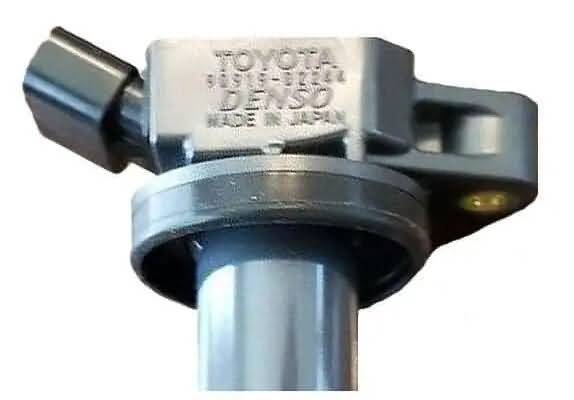
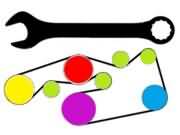


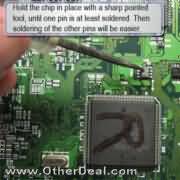
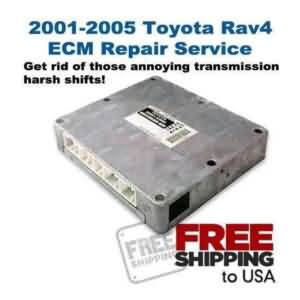
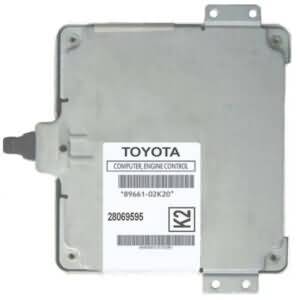
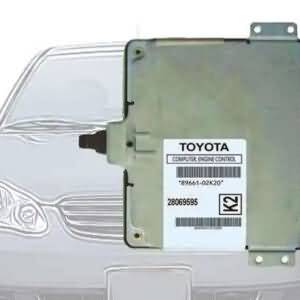

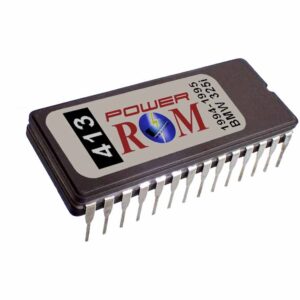
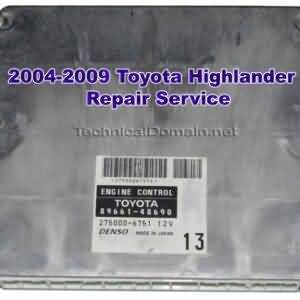
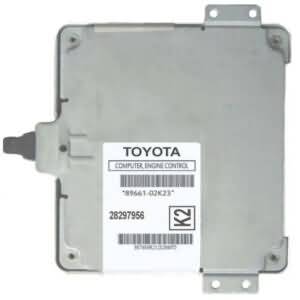

Looking for coil over resistance for 2001 toyota rav4 2.0L AWD